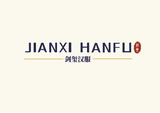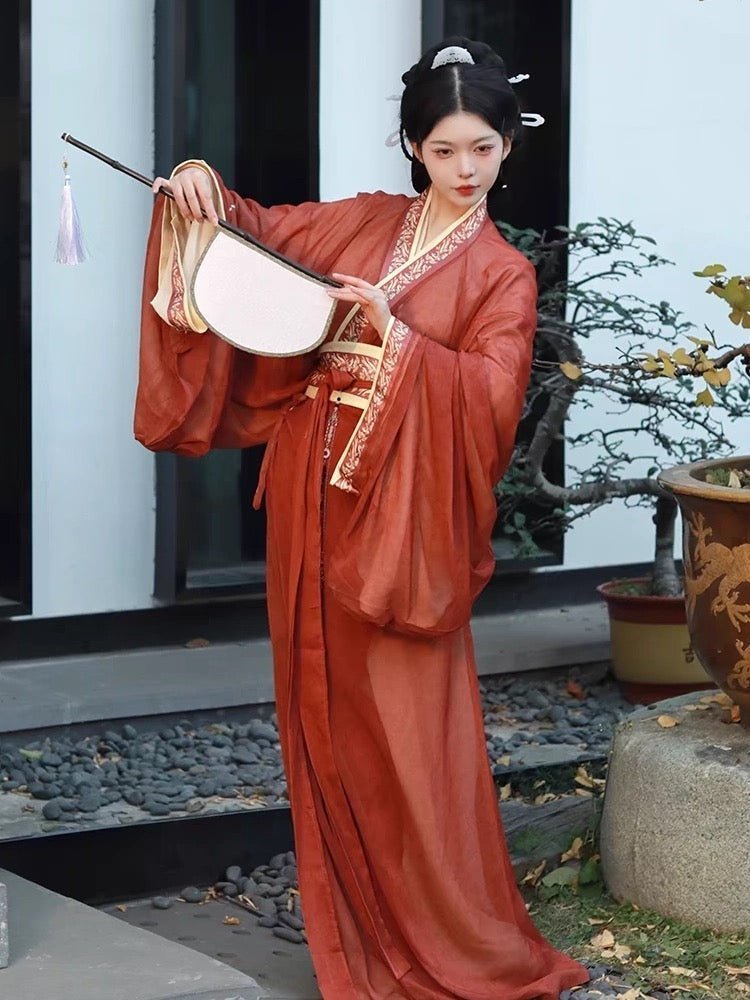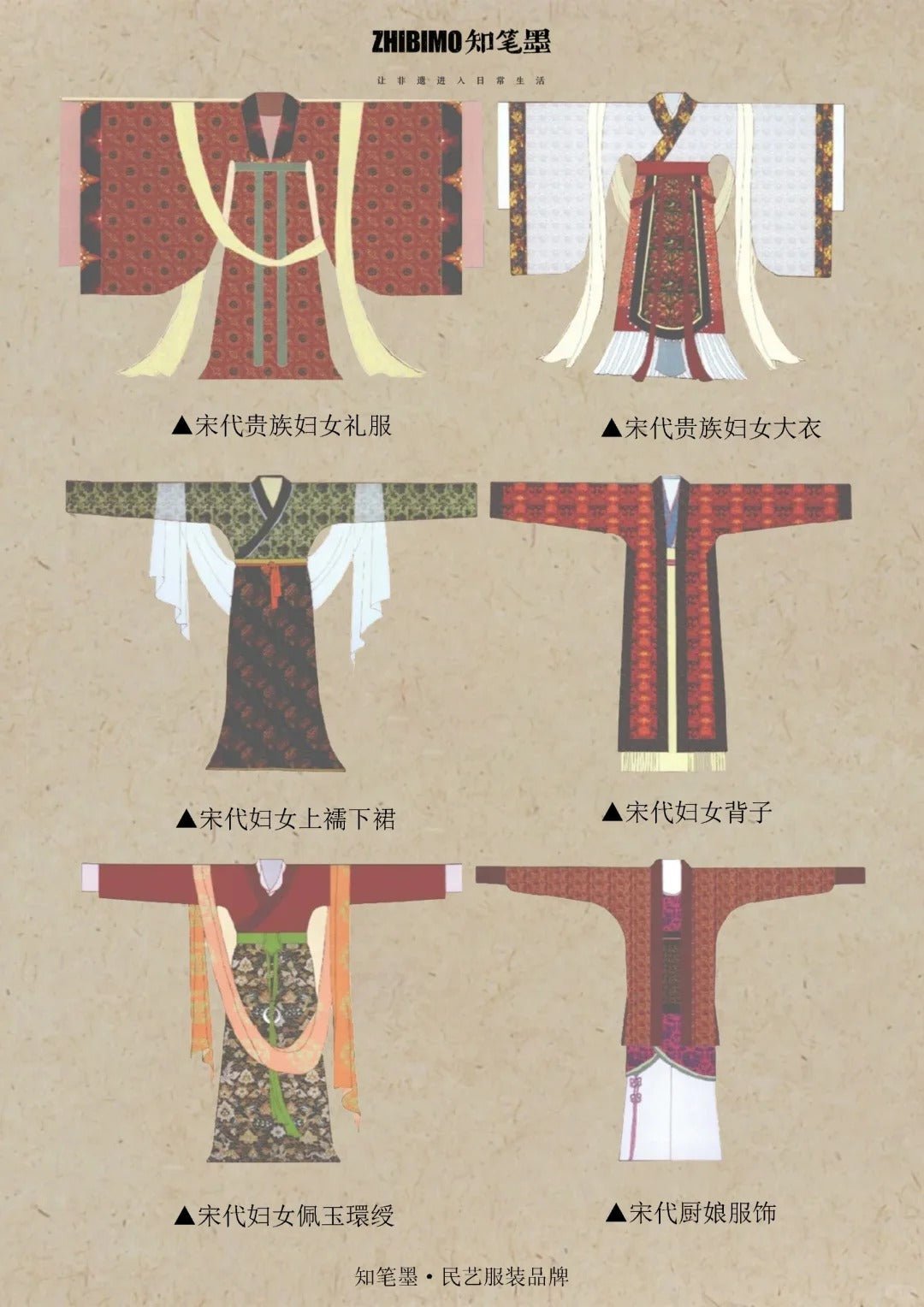Today, let's talk about two special existences within the Hanfu system. We all know about Qū Jū (curved-front robes) and Zhí Jū (straight-front robe) in Hanfu, but do you know the differences between them? In the following, I will briefly and clearly explain the distinctions between Qū Jū and Zhí Jū.(To make it easier to read, from now on, we will use "Qu Ju" and "Zhi Ju" in the following text)

▲Left: Qu Ju, Right: Zhi Ju
1、Historical Origins of Qu Ju and Zhi Ju
The history of Qu Ju can be traced back to the Qin Empire (770 BC – 221 BC), It also encompasses its predecessor, the Qin state when it was a vassal state. an ancient Hanfu form characterized by "xù rèn gōu biān" — that is, a triangular piece extended from the back of the garment, which is wrapped around the body and tied with a belt when worn. This unique design makes the Qu Ju robe fit the body more closely, creating a graceful curve.
During the Qin and Han dynasties (221 BC – 220 AD), Qu Ju robes were widely used, loved by both court nobles and ordinary people. In this period, Qu Ju robes came in various styles and rich materials: high-end fabrics like silk and brocade, as well as natural fibers like linen and hemp. They also featured vibrant colors—red, green, blue, and more—reflecting the social prosperity and cultural diversity of the time.
Zhi Ju evolved from Qu Ju. Because Qu Ju required complicated wrapping of the lapels, Zhi Ju was invented for easier wear and daily activities. It began to gain popularity in the late Han Dynasty (25 AD–220 AD) and was highly regarded during the Wei, Jin, and Northern and Southern Dynasties (220 AD–589 AD), becoming one of the common Hanfu styles of the era.
2、Differences Between Qu Ju and Zhi Ju
The differences between Qu Ju and Zhi Ju mainly lie in their structure, wearing method, usage occasions, and fabrics.
- Qu Ju: The lapel is in a curved triangular shape. When worn, it wraps around the body to form a beautiful curve. The sleeves are usually wide, exuding an elegant and flowing vibe. To wear it, you first put on the robe, wrap the lapels around the back, and tie them with a belt. Due to the long lapels, you need to pay attention to arranging them to avoid wrinkles. Qu Ju is often regarded as formal attire, suitable for solemn occasions like weddings and sacrifices, as its gorgeous and elegant style highlights the wearer's status and identity. In terms of fabrics, since Qu Ju was mostly used for ceremonial purposes, the aristocracy often chose high-end materials like brocaded damask and kesi (silk tapestry), which featured complex weaving techniques and exquisite patterns—for example, the cloud-patterned brocade of the Han Dynasty, with its dynamic and flowing motifs, accentuated the beauty of Qu Ju. In contrast, Qu Ju worn by commoners was mostly made of coarse linen or hemp, with rough textures and plain colors, focusing on basic wear needs.
- Zhi Ju: The lapel is in a straight-line shape, designed with a cross-collar and the right lapel over the left. The robe reaches to the ground, with simple and smooth lines. The wearing method is relatively easy—just put on the robe and tie the belt. Zhi Ju serves both as formal wear and daily clothing. Due to its simple and versatile design, it is suitable for various occasions and highly practical, allowing easy movement. As zhi ju leans more toward daily wear, its fabric types are more diverse. Besides nobles using silk and brocade, there are also cotton-linen blends suitable for all seasons. For example, summer zhi ju might use lightweight and breathable gauze, while winter ones might have cotton padding or fur linings to enhance warmth.
3、Modern Significance of Qu Ju and Zhi Ju
As classic styles in Hanfu, Qu Ju and Zhi Ju carry special meaning today. In terms of cultural inheritance, the winding lapels of Qu Ju and the straight-hanging hems of Zhi Ju retain the Qin-Han era concept of "harmony between man and nature" in craftsmanship, allowing us to intuitively feel ancient clothing etiquette and aesthetic styles.

▲This picture shows a modern improved style of Qu Ju Hanfu.
In today's fashion scene, Qu Ju and Zhi Ju also have a strong presence. Designers have applied the curved lines of Qu Ju to the hemlines of evening gowns, and combined the simple lines of Zhi Ju with Western tailoring to create the popular Neo-Chinese fashion style. Nowadays, more and more young people wear Qu Ju and Zhi Ju during festivals and cultural events. These ancient garments have transformed from museum exhibits into tangible fashion items in daily life, becoming a way for us to express our cultural identity.
Click the link below to learn more about related articles



